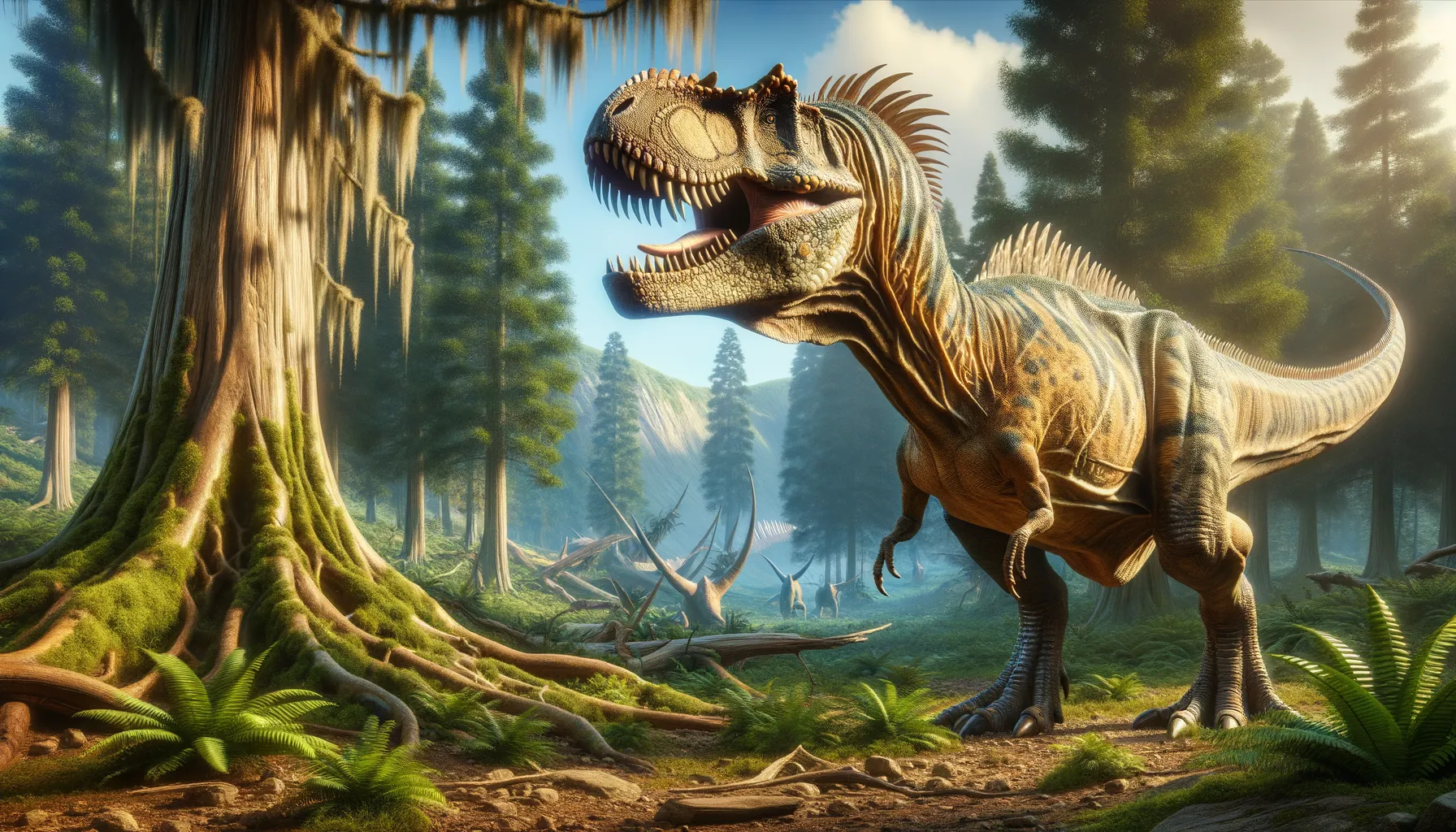
Bistahieversor
A fierce contender from the Cretaceous wilds!
Period
Cretaceous
Length
Roughly 9 meters in length.
Height
Estimated at about 3 meters tall.
Weight
Around 2,500 kilograms.
Bistahieversor was a tyrannosauroid dinosaur that roamed North America during the Late Cretaceous period. Known for its robust build, this predator had a powerful skull and sharp teeth, adapted for a carnivorous diet. Its discovery in the Bisti/De-Na-Zin Wilderness has provided valuable insights into the diversity and evolution of late Cretaceous theropods. Often regarded as a precursor to larger tyrannosaurs, Bistahieversor helps bridge gaps in our understanding of these formidable dinosaurs.
Diet
As a carnivore, Bistahieversor primarily fed on other dinosaurs. It likely hunted smaller herbivorous dinosaurs and scavenged on carcasses when available.
Hunting
Bistahieversor would have utilized its keen senses and powerful jaws to hunt effectively. Its hunting style may have involved ambush tactics, taking advantage of its surroundings for concealment.
Environmental challenges
Living in the Late Cretaceous, Bistahieversor faced challenges such as climate fluctuations and habitat changes. These environmental factors would have affected food availability and breeding grounds. Additionally, Bistahieversor had to compete with other large predators for resources, requiring adaptability in its survival strategies.
Speed
Moderate, as it was a large-bodied predator.
Lifespan
Approximately 20 to 30 years.
First discovery
Discovered in New Mexico in the early 1990s.
Fun Facts
- Bistahieversor was a large carnivorous dinosaur that lived about 74 million years ago in what is now New Mexico.
- Its name, Bistahieversor, means 'Bistahi Destroyer,' referencing its fearsome appearance and the region where it was found.
- This dinosaur belonged to the tyrannosaur family, making it a distant cousin of the famous Tyrannosaurus rex.
- Bistahieversor had a long, powerful skull filled with sharp teeth, ideal for hunting prey.
- It reached about 30 feet in length, showcasing its impressive size among predators of its time.
- Unlike T. rex, which had two tiny fingers, Bistahieversor had three fingers on each hand.
- Fossils of Bistahieversor help scientists understand the evolution and diversity of tyrannosaurs in North America.
Growth and Development
Bistahieversor likely grew rapidly during its juvenile stages, similar to other theropods. This growth rate would have been essential for survival in a predator-rich environment. As it matured, changes in its skull structure and tooth replacement would have marked its development.
Habitat
Bistahieversor inhabited the floodplain and forested regions of ancient North America. Its environment was rich in rivers and vegetation, supporting diverse plant life and prey species. Seasonal changes would have influenced its hunting patterns and movement within this habitat.
Interaction with other species
Bistahieversor coexisted with various herbivorous dinosaurs, as well as smaller theropods. It likely played a key role as a top predator within its ecosystem. Interactions with other species would have included competition for food and territory.
Natural lifespan
Bistahieversor could live up to around 20 to 30 years in the wild.
Reproduction
Bistahieversor would have laid eggs, as typical of theropods. Nesting behaviors might have included selecting secluded areas for safety from predators. Parental care could have varied, with some guarding of nests possible.
Social behaviour
Like many large theropods, Bistahieversor might have been solitary. However, some evidence suggests occasional group living, perhaps during certain seasons or for mating. Little is known about its social structures compared to more well-studied tyrannosaurs.
Fossil locations
Fossils of Bistahieversor have primarily been found in New Mexico. The Bisti/De-Na-Zin Wilderness is a significant site for these discoveries. Excavations in this area have provided valuable paleontological insights into the Late Cretaceous fauna.
